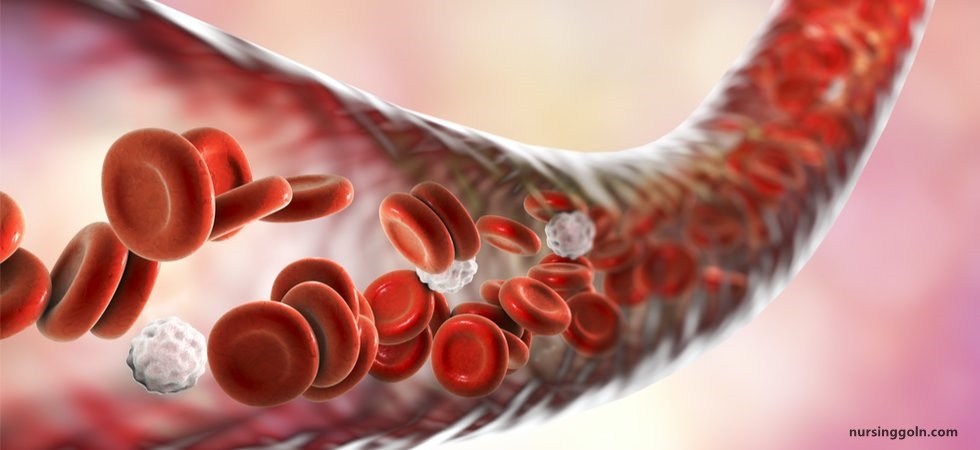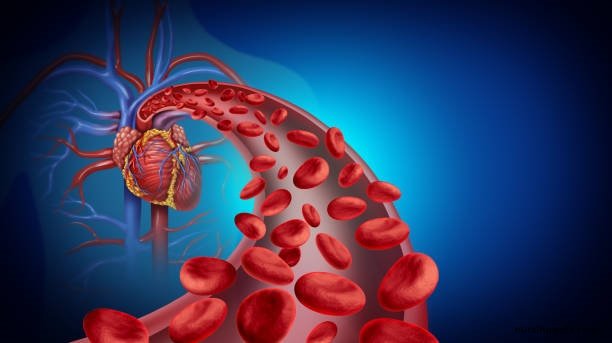Today our topic of discussion is ” Structure and Function of Blood Vessels “. The cardiovascular system, an intricate maze of vessels and chambers, works ceaselessly to deliver oxygen and nutrients to every cell and remove waste products. At the heart of this system lies the vast network of blood vessels, whose primary function is to transport blood throughout the body. This article provides an in-depth look into the structure and function of these vital conduits.

Structure and Function of Blood Vessels: The Cardiovascular System: Blood Vessels and Circulation
1. Types of Blood Vessels
There are three major types of blood vessels: arteries, veins, and capillaries.
- Arteries: These vessels carry oxygenated blood away from the heart to the tissues. The exception is the pulmonary artery, which transports deoxygenated blood from the heart to the lungs.
- Veins: Veins transport deoxygenated blood from the tissues back to the heart. The pulmonary veins are unique as they carry oxygenated blood from the lungs to the heart.
- Capillaries: These are microscopic vessels that link arteries and veins. They play a crucial role in the exchange of gases, nutrients, and waste products between the blood and the body’s cells.
2. Structure of Blood Vessels
Each type of blood vessel has a specific structure tailored to its function.
- Arteries: The walls of arteries are thick and muscular, enabling them to withstand the high pressure of blood pumped from the heart. They comprise three layers:
- Tunica Intima: This innermost layer is smooth and reduces friction to allow blood to flow easily.
- Tunica Media: This middle layer is muscular and elastic, allowing arteries to expand or contract in response to changes in blood volume or pressure.
- Tunica Externa: This outermost layer is composed of connective tissue that provides structural support to the artery.
- Veins: The walls of veins are thinner than those of arteries. They also consist of the tunica intima, tunica media, and tunica externa, but the tunica media is less muscular. Veins also contain valves, which prevent backflow of blood and aid its return to the heart, especially against gravity in the limbs.
- Capillaries: Being the site of exchange, capillaries have walls that are only one cell thick, facilitating rapid diffusion of substances.

3. Functions of Blood Vessels
- Arteries: Due to their muscular walls, arteries can constrict (vasoconstriction) or dilate (vasodilation) in response to hormonal or neural stimuli. This ability helps regulate blood pressure and direct blood flow to specific tissues as needed.
- Veins: The primary function of veins is to return blood to the heart. The presence of valves ensures unidirectional blood flow. Muscle contractions in the limbs also help push blood through the veins.
- Capillaries: These tiny vessels facilitate the exchange of oxygen, nutrients, carbon dioxide, and waste products between the blood and surrounding tissues. This exchange occurs through the process of diffusion, where substances move from areas of high concentration to areas of low concentration.
4. Blood Vessel Dynamics
Blood flow in the cardiovascular system is dynamic and influenced by multiple factors:
- Blood Pressure: This is the force exerted by blood against the walls of the vessels. It is highest in the arteries and decreases progressively through the capillaries and veins.
- Resistance: Various factors, like the vessel diameter, blood viscosity, and vessel length, affect resistance, which in turn influences blood flow. For instance, vasoconstriction increases resistance, reducing blood flow, while vasodilation has the opposite effect.

5. Blood Vessel Health and Disorders
The health of our blood vessels is crucial for our overall well-being. Several conditions can adversely affect vessel health:
- Atherosclerosis: This involves the build-up of fatty deposits inside arterial walls, reducing blood flow. It’s a significant risk factor for heart disease and stroke.
- Varicose Veins: These are enlarged, twisted veins, commonly in the legs. They result from weak or damaged valves and can cause pain or discomfort.
- Aneurysm: This is a bulge in the wall of an artery due to weakness. If it ruptures, it can lead to life-threatening internal bleeding.

6. Conclusion
Blood vessels, with their intricate structure and vital functions, are paramount for the survival and health of every cell in the body. Their role in transporting nutrients, gases, and waste products is unparalleled, and their health is fundamental to our overall well-being. Ensuring their optimal function through lifestyle choices and timely medical interventions is essential to stave off cardiovascular disorders and promote long-term health.
Read more:
